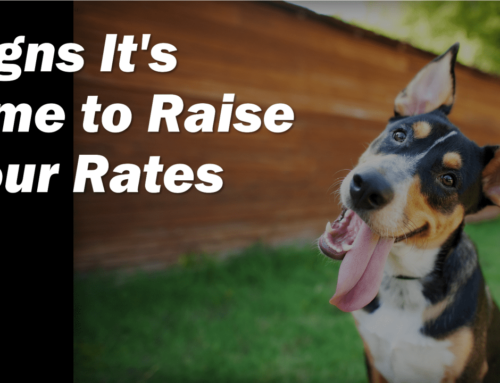The Pitbull Controversy – Should They Play?

Allowing pit bulls to participate in off-leash playgroups is a controversy in the industry. Safety is a top concern for operators and is the reason some exclude the breed. Others receive feedback from customers that they don’t want their dogs to play with pit bulls. As pet professionals we are sensitive to the perceptions of global breed bans…so what do you do? This article will help you maintain safety and keep all your clients happy.
As professional providers of off-leash playgroups do you have a responsibility to evaluate every dog that applies to your center?
Are admittance policies that exclude certain breeds discriminatory?
How do you balance group safety, public relations, and setting individual dogs up for success in your evaluation process?
Good intentions are not always enough in today’s world of social media and over saturated news coverage looking for a good controversy. Keep reading to find out how to stay out of the breed discrimination fray and keep your focus on efficient dog evaluations and ensuring safe playgroups in your center. You’ll learn how to use the Application form as a tool to navigate these controversial waters.
A recent news story about a private dog park operated by a dog daycare business that excludes bull terriers and pit bulls is a great example of unintentionally creating a media controversy and potentially very bad public relations for your business. In reading the comments to the online story, by far, the majority of people responding:
- viewed the policy as discriminatory,
- vowed to never frequent the business, and
- asked their many dog-loving friends to join them in a boycott.
A later post clarified that the ban was required by insurance, but this seemed to do nothing to sway the public’s opinion once the breed discrimination accusation bandwagon was set in motion. Unfortunately, many posts also questioned the knowledge base and professionalism of the business operators in establishing a breed ban policy.
A Better Alternative
As you create your own admittance policy focus on appropriate and inappropriate behaviors of each individual dog as an alternative to breed bans. We recognize taking time to evaluate every dog that applies for play is not the best business policy either. Your solutions include:
- a pre-screening process prior to scheduling the evaluation
- a well-designed Off-Leash Play Application form that clients are required to submit prior to scheduling an individual dog for an evaluation (See one in our Dog Management Tools pdf)
- reviewing responses in advance on the application so you can screen
- dogs that have the social background that sets them up for success, or
- to exclude dogs that do not meet the behavior requirements for your program
Reviewing the Off-Leash Play Application Responses
Assess Dog Background Section
- Breed
- Age
- Reason off-leash play is desired
- Prior social history

- Red breed play styles as outlined on page 50 of Off-Leash Dog Play: A Complete Guide to Safety & Fun
- Seven years of age or older
- An adult dog coming for socialization
- Social history is playing with the same few dogs (in the neighborhood, or friends and family)
These responses typically indicate a dog does not meet the requirement of currently having good social skills. These dogs might tolerate an off-leash play environment, but very few enjoy it. Since we are focused on both the physical safety and emotional well-being of dogs in our centers it is in these dog’s best interest to find another activity that they would enjoy rather than off-leash play.
Assess Household and Behavior Sections
- Do they have few or many social experiences?
- How many fears?
- How frequently are warning signals given?
- How much is obedience used with the dog?
- do they respond positively
- do they have self-control
- Is there any history of aggressive behaviors?
- What is their energy level?
- Clues on prey drive?
Red flag responses in these sections include:
- Very limited social experiences outside the home
- Very limited social experiences with dogs outside the family or neighborhood
- No obedience training or little use of cues in home
- Limited boundaries in the home environment and multiple behavior problem areas
- Multiple fears
- Multiple instances of aggressive displays
- High energy or lack of self-control
- High prey drive
An application with multiple red flag responses is one that warrants a phone conversation with the owner….not because of the breed, but because of the experience and behavior of the dog.
Determine Your Client’s Motivation
Your goal during your conversation with the pet owner is to clarify their red flag responses and to determine the reason they are applying for their dog to join an off-leash playgroup.
During the conversation:
- Listen closely to the owner’s description of their dog’s behavior and reinforce that they have a great pet dog.
- Stay focused on the behavior responses and the reasons they are seeking off-leash play for their dog.
- As you reply, refer to your professional experience that the dog may not be a good match for an off-leash play environment.
- Listen to understand the client’s motivation for applying to see if you can provide an alternative solution to the problem they want to solve by bringing their dog to play.
Many of these conversations result in the owner changing their mind about scheduling the dog evaluation appointment; especially when you find an alternative solution to their real problem. It could be a need to get the dog out of the house for a day, or short time period, or need for behavior modification work.
Is Evaluating a Safety Risk?

- If yes, decline the application
- Explain that based on your experience the dog’s behavior and background is not a good fit for your playgroup environment.
- Offer alternative services you provide that could help the dog and owner
- If you don’t offer the right service then refer to your local network of other pet professionals
If the safety risk is low, schedule the evaluation, but ensure the client has an inside peek. These cases are opportunities to educate and share specific behaviors with the owner in the event you do not accept the dog.
As a pet professional you do not want a high-risk dog continuing to be put in social situations with other dogs. You have a responsibility to attempt to educate the dog owner on the potential risk.
Deciding not to evaluate a dog can be best for your business, the dog and client.
These situations require great communication skills and a clear understanding of appropriate versus inappropriate off-leash play behaviors. In these situations it will be best to focus on the key behaviors and red flag responses that are problematic rather than focusing on the breed type. The key to success is the communication of your message to the owner and we will talk more about that in next week’s post. Keep in mind your overall responsibility is to the safety of your staff and all the dogs that attend your playgroup. Have confidence and say no to evaluations to keep the dogs safe!







